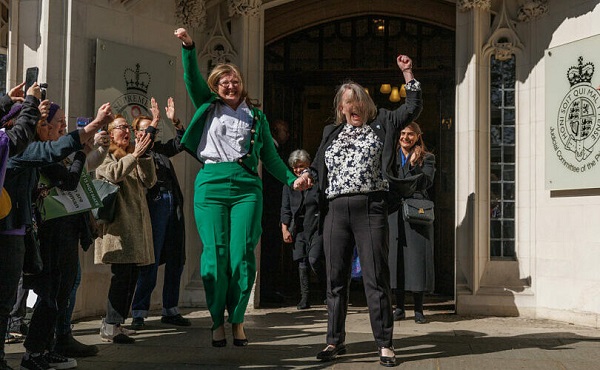Alberta
Did you win? Cash and Cars Lottery winners released today.

The names of all prize winners will be listed on the Cash and Cars Lottery website at cashandcarslottery.ca beginning today.
Cash and Cars Lottery Draws
Alberta (October 22, 2019)- “It’s donating with a chance to win, so it’s a win-win”.
That’s how Lawrence Chang of Leduc described his win when told his lucky ticket number 700737009 had just won him the Alberta Cancer Foundation You Win 50 draw. His half was $900,000 cash.
Anica Hicks of Calgary had a similar comment when told that she had just won the third grand prize in the Alberta Cancer Foundation Cash and Cars Lottery. She had the choice of a $270,000 annuity of $4,500 a month for 60 months or $250,000 cash. She decided to take the $250,000 cash.
“It’s important to give back to charity, so we buy tickets for all the lotteries,” she said. Her winning ticket number was 302164004.
Winners for the Cash and Cars Lottery 2,675 prizes worth $3.8 million and the You Win 50 were drawn in Calgary today.
 A lucky Edmonton man won the lottery’s first grand prize package that includes a Kimberley Homes furnished show home in Edmonton, a 2019 Honda Civic Hatch Sport CVT and $10,000 cash. Joseph Andrews was holding ticket number 106617001. His prize is worth more than $1 million.
A lucky Edmonton man won the lottery’s first grand prize package that includes a Kimberley Homes furnished show home in Edmonton, a 2019 Honda Civic Hatch Sport CVT and $10,000 cash. Joseph Andrews was holding ticket number 106617001. His prize is worth more than $1 million.
 A Brooks man is now the recipient of the lottery’s second grand prize package in Calgary. Lyle Conners now owns a Truman furnished Brownstone in Calgary’s University District, a 2019 Honda CRV LX AWD and $10,000 cash, all worth a total of more than $800,000. Mr. Connors was holding lucky ticket number 207280001.
A Brooks man is now the recipient of the lottery’s second grand prize package in Calgary. Lyle Conners now owns a Truman furnished Brownstone in Calgary’s University District, a 2019 Honda CRV LX AWD and $10,000 cash, all worth a total of more than $800,000. Mr. Connors was holding lucky ticket number 207280001.
The annual lottery supports the Alberta Cancer Foundation, which is the official fundraising partner for all 17 Alberta Health Services cancer centres in the province, including the Tom Baker Cancer Centre in Calgary and the Cross Cancer Institute in Edmonton. Funds raised from the lottery allow the Alberta Cancer Foundation to strategically invest in breakthrough cancer research, clinical trials and enhanced care initiatives at all cancer centres in the province. The lottery makes life better for Albertans and their families facing cancer.
Other major lottery winners are:
- 2019 BMW X3 xDrive 30i -JUNE OLESKY of Calgary Ticket #205511002
- 2019 Infinity QX60 -CORI WILLIAMS of Spruce Grove Ticket #402203003
- 2019 Ram 1500 Tradesman Crew Cab 4X4 -GARRY HOLMEN of Bentley Ticket #400284009 (Garry and Denise have been buying a ticket every year since 2007. She is a cancer survivor).
- 2019 Hyundai Santa Fe Ultimate 2.0T AWD-DAVID MCGARRY of Redcliff Ticket #102898001
- 2019 Mini Cooper Countryman All4-RYAN AND JACKIE GARDNER of Peace River Ticket #111805001
- 2019 Toyota RAV4 XLE-BRIAN AHORNER of Airdrie Ticket #400374008 (He says he buys tickets every year to help the foundation. He has family members who passed away with cancer.)
- 2019 Acura ILX Premium -CAROL BEAUPRE of Edmonton Ticket #303020002 (She says she always buys tickets to support the foundation and says she knows a number of people impacted by cancer, including her mother. She said she was thrilled to win. It made her year.)
The names of all prize winners will be listed on the Cash and Cars Lottery website at cashandcarslottery.ca beginning today.
Alberta
CPP another example of Albertans’ outsized contribution to Canada

From the Fraser Institute
By Tegan Hill
Amid the economic uncertainty fuelled by Trump’s trade war, its perhaps more important than ever to understand Alberta’s crucial role in the federation and its outsized contribution to programs such as the Canada Pension Plan (CPP).
From 1981 to 2022, Albertan’s net contribution to the CPP—meaning the amount Albertans paid into the program over and above what retirees in Alberta received in CPP payments—was $53.6 billion. In 2022 (the latest year of available data), Albertans’ net contribution to the CPP was $3.0 billion.
During that same period (1981 to 2022), British Columbia was the only other province where residents paid more into the CPP than retirees received in benefits—and Alberta’s contribution was six times greater than B.C.’s contribution. Put differently, residents in seven out of the nine provinces that participate in the CPP (Quebec has its own plan) receive more back in benefits than they contribute to the program.
Albertans pay an outsized contribution to federal and national programs, including the CPP because of the province’s relatively high rates of employment, higher average incomes and younger population (i.e. more workers pay into the CPP and less retirees take from it).
Put simply, Albertan workers have been helping fund the retirement of Canadians from coast to coast for decades, and without Alberta, the CPP would look much different.
How different?
If Alberta withdrew from the CPP and established its own standalone provincial pension plan, Alberta workers would receive the same retirement benefits but at a lower cost (i.e. lower CPP contribution rate deducted from our paycheques) than other Canadians, while the contribution rate—essentially the CPP tax rate—to fund the program would likely need to increase for the rest of the country to maintain the same benefits.
And given current demographic projections, immigration patterns and Alberta’s long history of leading the provinces in economic growth, Albertan workers will likely continue to pay more into the CPP than Albertan retirees get back from it.
Therefore, considering Alberta’s crucial role in national programs, the next federal government—whoever that may be—should undo and prevent policies that negatively impact the province and Albertans ability to contribute to Canada. Think of Bill C-69 (which imposes complex, uncertain and onerous review requirements on major energy projects), Bill C-48 (which bans large oil tankers off B.C.’s northern coast and limits access to Asian markets), an arbitrary cap on oil and gas emissions, numerous other “net-zero” targets, and so on.
Canada faces serious economic challenges, including a trade war with the United States. In times like this, it’s important to remember Alberta’s crucial role in the federation and the outsized contributions of Alberta workers to the wellbeing of Canadians across the country.
Alberta
Made in Alberta! Province makes it easier to support local products with Buy Local program

Show your Alberta side. Buy Local. |
When the going gets tough, Albertans stick together. That’s why Alberta’s government is launching a new campaign to benefit hard-working Albertans.
Global uncertainty is threatening the livelihoods of hard-working Alberta farmers, ranchers, processors and their families. The ‘Buy Local’ campaign, recently launched by Alberta’s government, encourages consumers to eat, drink and buy local to show our unified support for the province’s agriculture and food industry.
The government’s ‘Buy Local’ campaign encourages consumers to buy products from Alberta’s hard-working farmers, ranchers and food processors that produce safe, nutritious food for Albertans, Canadians and the world.
“It’s time to let these hard-working Albertans know we have their back. Now, more than ever, we need to shop local and buy made-in-Alberta products. The next time you are grocery shopping or go out for dinner or a drink with your friends or family, support local to demonstrate your Alberta pride. We are pleased tariffs don’t impact the ag industry right now and will keep advocating for our ag industry.”
Alberta’s government supports consumer choice. We are providing tools to help folks easily identify Alberta- and Canadian-made foods and products. Choosing local products keeps Albertans’ hard-earned dollars in our province. Whether it is farm-fresh vegetables, potatoes, honey, craft beer, frozen food or our world-renowned beef, Alberta has an abundance of fresh foods produced right on our doorstep.
Quick facts
- This summer, Albertans can support local at more than 150 farmers’ markets across the province and meet the folks who make, bake and grow our food.
- In March 2023, the Alberta government launched the ‘Made in Alberta’ voluntary food and beverage labelling program to support local agriculture and food sectors.
- Through direct connections with processors, the program has created the momentum to continue expanding consumer awareness about the ‘Made in Alberta’ label to help shoppers quickly identify foods and beverages produced in our province.
- Made in Alberta product catalogue website
Related information
-

 International1 day ago
International1 day agoPope Francis has died aged 88
-

 International1 day ago
International1 day agoPope Francis Dies on Day after Easter
-

 International1 day ago
International1 day agoJD Vance was one of the last people to meet Pope Francis
-

 2025 Federal Election14 hours ago
2025 Federal Election14 hours agoOttawa Confirms China interfering with 2025 federal election: Beijing Seeks to Block Joe Tay’s Election
-

 2025 Federal Election14 hours ago
2025 Federal Election14 hours agoReal Homes vs. Modular Shoeboxes: The Housing Battle Between Poilievre and Carney
-

 COVID-1914 hours ago
COVID-1914 hours agoNearly Half of “COVID-19 Deaths” Were Not Due to COVID-19 – Scientific Reports Journal
-

 2025 Federal Election14 hours ago
2025 Federal Election14 hours agoHow Canada’s Mainstream Media Lost the Public Trust
-

 2025 Federal Election14 hours ago
2025 Federal Election14 hours agoPOLL: Canadians want spending cuts







